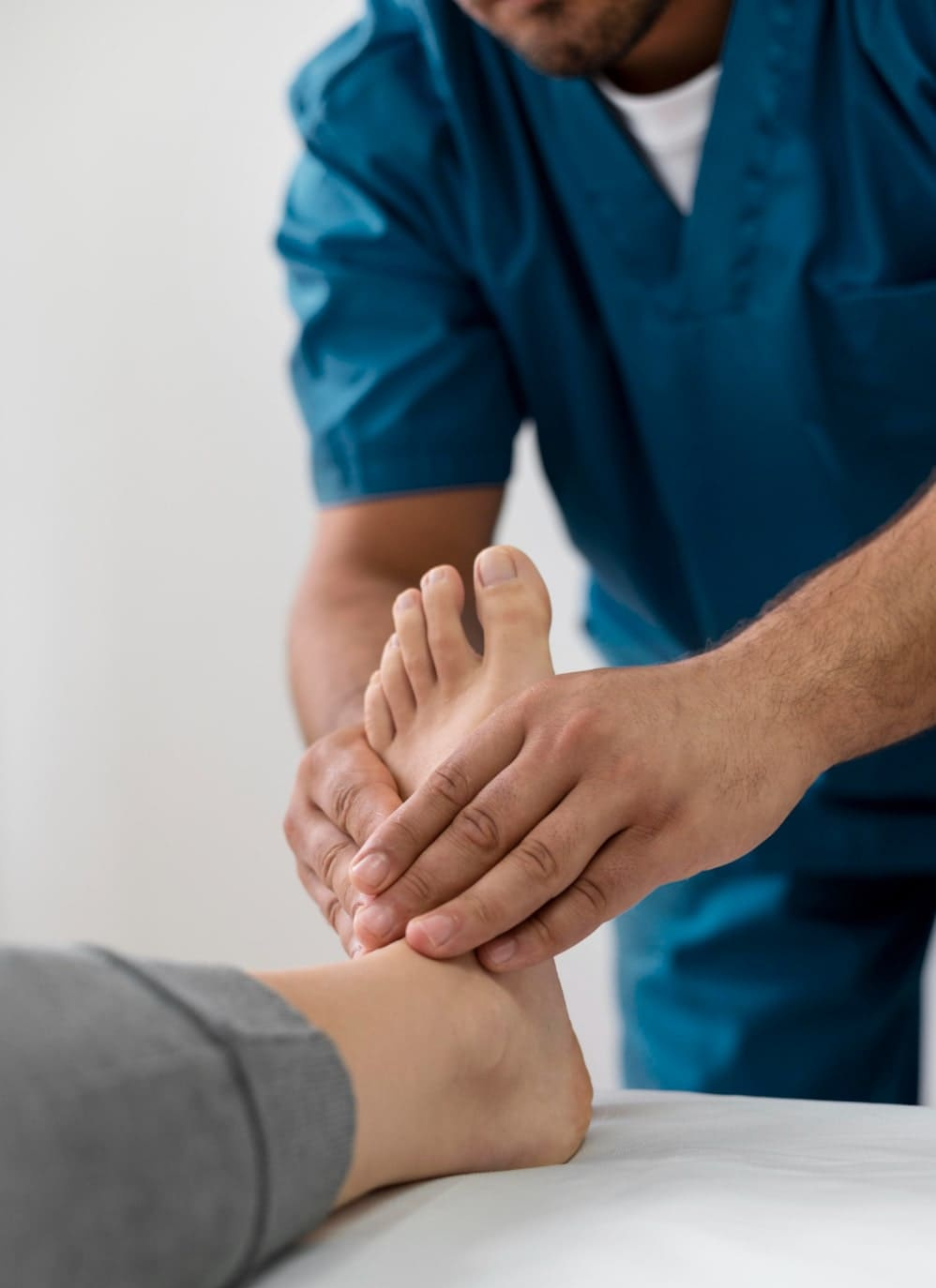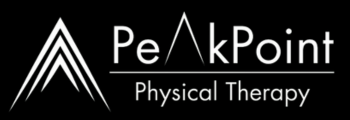Welcome to Peak Point PT – Same Team, Same Services, and Same Location of First Class Physical Therapy (NJ). We're excited to introduce our new name! Visit us today for the high-quality care you've always relied on.
Peak Point PT – Orthopedic Physical Therapy in Passaic
Orthopedic physical therapy is dedicated to enhancing the function of the musculoskeletal system, a complex network comprising bones, muscles, tendons, ligaments, and nerves. An orthopedic physical therapist guides patients in regaining flexibility, strength, and range of motion. This specialized therapy is often recommended for managing chronic pain, recuperating after surgery, or treating acute injuries. Orthopedic physical therapists typically hold a Doctor of Physical Therapy (DPT) degree and undergo specialized training in orthopedics. For Orthopedic Physical Therapy in Passaic, we do take patients from all over Passaic county and other nearby areas like Clifton, Wallington, and Rutherford.

While both orthopedic surgeons and physical therapists diagnose musculoskeletal injuries and conditions, their primary treatment approaches differ significantly. Orthopedic surgeons restore function through surgical interventions, often specializing in specific areas like the spine, hips, or shoulders. In contrast, the cornerstone of orthopedic physical therapy is to facilitate proper healing, improve strength, increase range of motion, and enhance overall functional mobility through non-surgical methods.
Conditions Treated by Orthopedic Physical Therapy
At Peak Point Physical Therapy our trained Orthopedic Physical Therapists, focus on treating conditions affecting the musculoskeletal system, which is made up of joints, muscles, bones, ligaments, and tendons.
Here is a list of conditions, grouped by body region for better organization and understanding
Lower Body Conditions
Following are the common lower body conditions that can be treated by orthopedic physical therapy.
Hip Pain & Problems
- Hip bursitis
- Hip fracture
- Hip labral tears
- Sciatica
- Anterior Hip Pain
Knee Pain & Problems
- Torn meniscus
- ACL Issues
- Ligament Tears
- Patellar Tendinitis
- Baker’s Cyst
Foot and Ankle
- Plantar fasciitis
- Shin splints
- Sprained Ankle
- Sports Injury
Upper Body Conditions
Following are the common upper body conditions that can be treated by orthopedic physical therapy.
Shoulder Pain & Problems
- Frozen shoulder
- Rotator cuff
- Tendinitis or Bursitis
- Labral Tears
- Shoulder Instability or Dislocation
- Post-Surgical Shoulder Rehab
Elbow Pain
- Lateral epicondylitis (Tennis elbow)
- Medial epicondylitis (Golfer’s or baseball elbow)
- Elbow Dislocations
- Ulnar Collateral Ligament Injury
- Olecranon Bursitis
- Elbow Fracture Rehab
- Tendinopathy
Wrist & Hand Pain
- Carpal Tunnel Syndrome
- Arthritis
- Wrist Sprain
- Trigger Finger
- Tendinopathy
- Fractures Rehab
- Ganglion Cyst
Spine & General Pain
- Herniated Disc
- Spinal Stenosis
- Degenerative Disc Disease
- Fractures
- Osteoarthritis
- Scoliosis
- Spinal Pain
- Lower Back Pain
- Strains & Sprains
- Neck Pain
- Nerve Related Pain
- Facet Joint Pain
- Soft Tissue Pain
- Repetitive Strain Injury
- Nerve Entrapment
- Sports Injuries
Don’t Wait for The Care Your Loved Ones Need
Insurance – For Orthopedic Physical Therapy in Passaic
Peak Point Physical Therapy accepts the following insurance.











We accept the above insurance providers for physical therapy. If your plan is not listed, please call 973-657-6334 on to verify if your insurance plan is accepted or fill in the below form and we will get back to you soon.
Take The First Step In Your Recovery Journey Today
Recovery Starts here! We want to help you get back to doing the activities that you love. Fill out our short form and we’ll contact you to schedule your appointment as soon as possible!

Orthopedic Physical Therapy Techniques
Orthopedic physical therapists at Peak Point PT use multiple range of tools and techniques to get our patients back to achieving dreams. A physical therapy appointment typically will include a mix of stretches and exercises. Therapeutic techniques can include:
Following are the orthopedic physical therapy techniques we do at our Passaic clinic.

Hot Therapy
The application of moist heat can help increase circulation to injured areas of the body, providing pain relief.
Cold Therapy
Ice packs or other forms of cold therapy can reduce inflammation in injured tissues.
Soft Tissue Manipulation
This form of manual therapy is used to treat muscle adhesions and improve joint function.
Manual Therapy
A medication-free hands-on technique during which a physical therapist moves joints and manipulates soft tissue.
Electrical Stimulation
Forms of electrical stimulation such as transcutaneous electrical nerve stimulation (TENS) can help interrupt pain signals.
Ultrasound Therapy
This treatment uses sound waves to increase blood flow to a specific area of the body, such as the back or neck.
Most patients also receive an exercise plan that includes specific movements to help them regain balance, improve muscle tone, and increase their range of motion.
Benefits of Orthopaedic Physical Therapy
Orthopedic physical therapy offers a wide range of advantages for individuals dealing with musculoskeletal issues. The primary goal is to help you regain optimal function and improve your quality of life without necessarily resorting to surgery or heavy medication.
Personalized Care
Treatments are highly individualized, tailored to your specific condition, goals, and lifestyle, ensuring the most effective and efficient path to recovery.
Pain Reduction
One of the most immediate and significant benefits is pain relief. Physical therapists use various techniques, including manual therapy, exercises, and modalities, to decrease pain and inflammation.
Improved Mobility & Range of Motion
Whether it’s a stiff neck or a hip recovering from surgery, physical therapy helps to restore flexibility and expand your range of motion, making everyday activities easier.
Enhanced Strength & Stability
Through targeted exercises, you’ll build strength in weakened muscles and improve joint stability, which is crucial for preventing future injuries and supporting proper movement.
Faster Recovery From Injury or Surgery
For acute injuries or post-surgical rehabilitation, physical therapy is vital. It guides the healing process, prevents complications, and accelerates your return to normal activities.
Prevention of Future Injuries
Therapists teach you proper body mechanics, posture, and exercise techniques. This education empowers you to protect yourself from re-injury and maintain long-term musculoskeletal health.
Reduced Reliance on Medication
By addressing the root cause of pain and dysfunction, physical therapy can significantly reduce the need for pain relievers, including opioids, which carry their own risks.
Avoidance of Surgery
In many cases, consistent and appropriate physical therapy can effectively treat conditions that might otherwise require surgery, saving you from invasive procedures, their associated risks, and lengthy recovery times.
Don’t Wait for The Care Your Loved Ones Need
What to Expect During a Physical Therapy Appointment?
Most patients who work with a physical therapist will have a series of appointments. They may see a physical therapist two to three times a week over several weeks to maximize strength and conditioning as quickly as possible.
At patient’s first physical therapy appointment, their orthopedic physical therapist will take time to get to know them. Medical history of the patient will be known, their current symptoms and how their pain is affecting their daily life. They also will discuss the patient’s specific goals, such as getting back to challenges.
A personalized treatment plan will be created based on the patient’s requirements needs. Our team also works in coordination with other providers, such as a patient’s neurosurgeon, orthopedic spine surgeon, or physiatrist. During the patient’s first appointment, the therapist also may conduct a functional capacity evaluation (FCE) to better understand the patient’s level of mobility and strength. They may observe the patient while they sit, stand, squat, or bend. They may have the patient practice lifting, pushing, or pulling. This information helps the orthopedic physical therapist develop a treatment plan.


